site search
online catalog
PRESENTATION SWORD FROM JAY COOKE, FINANCIER OF THE UNION, TO FELLOW SANDUSKY OHIO NATIVE LT. JAY COOKE SMITH, 101st OHIO, ADC TO GEN. CRUFT AND BRIGADE COMMANDER KIRBY, 4th ARMY CORPS: “…MOUNTED AND CONTINUALLY ON THE FRONT LINE” AT NASHVILLE.

Hover to zoom


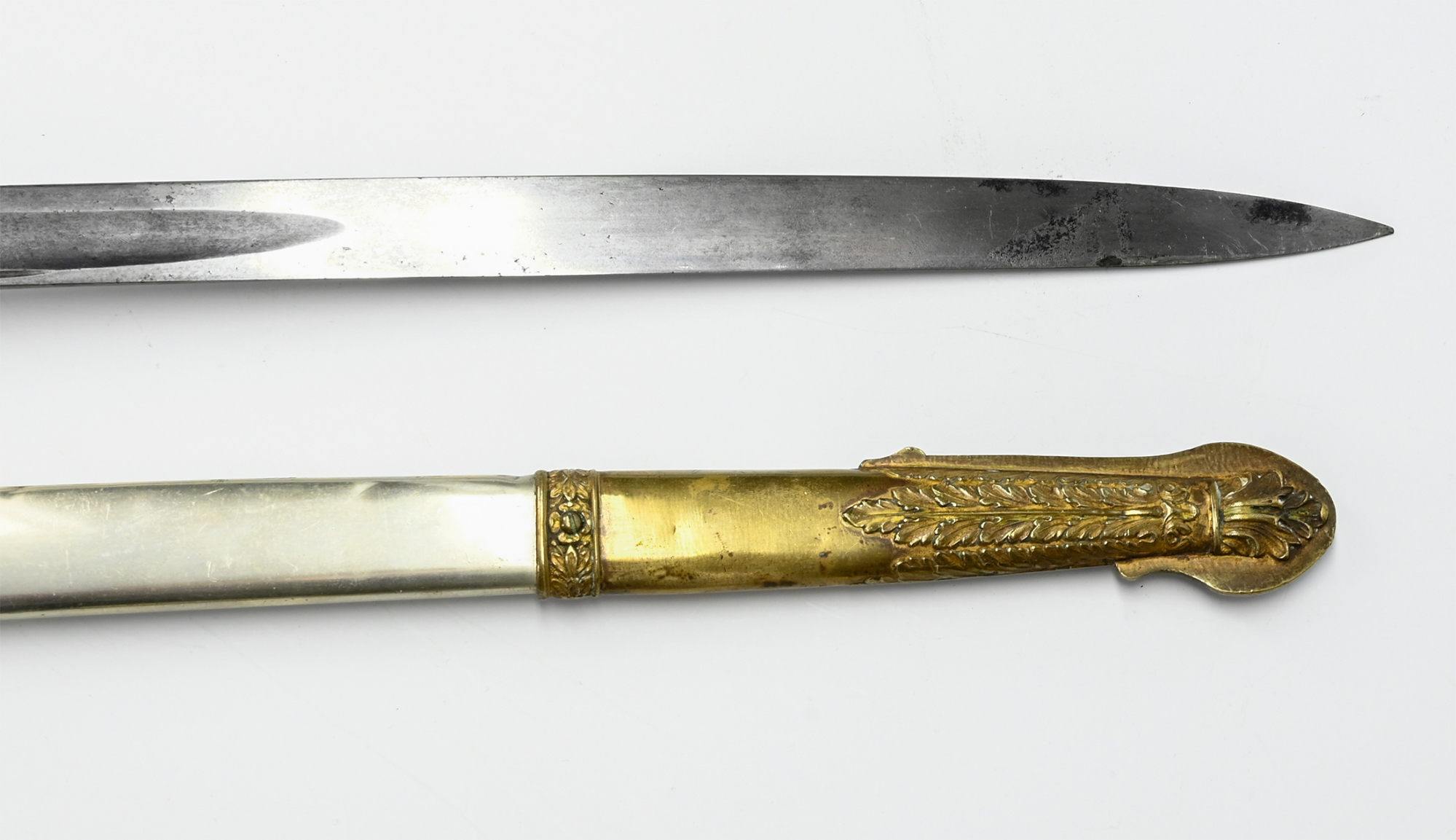
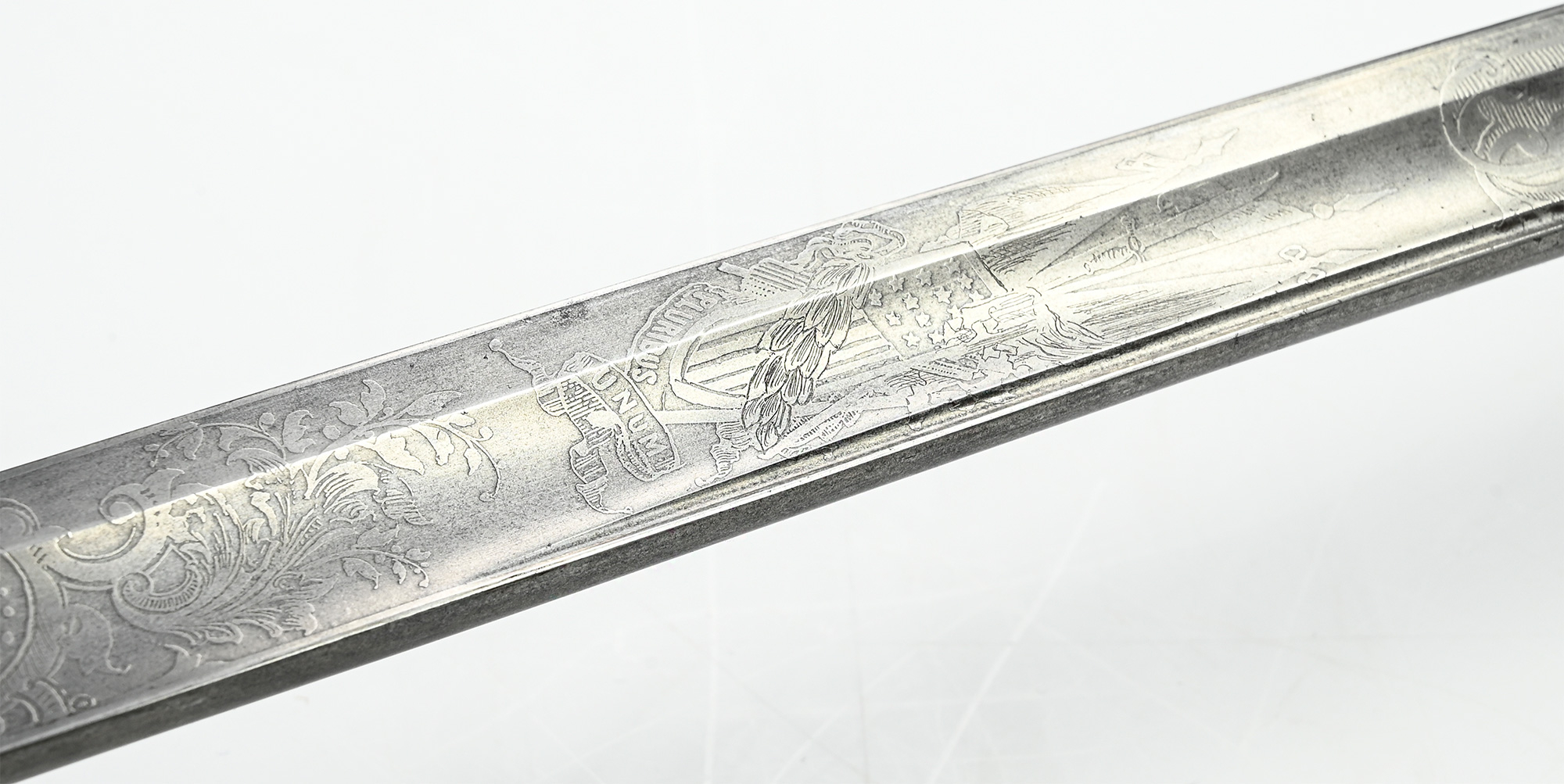
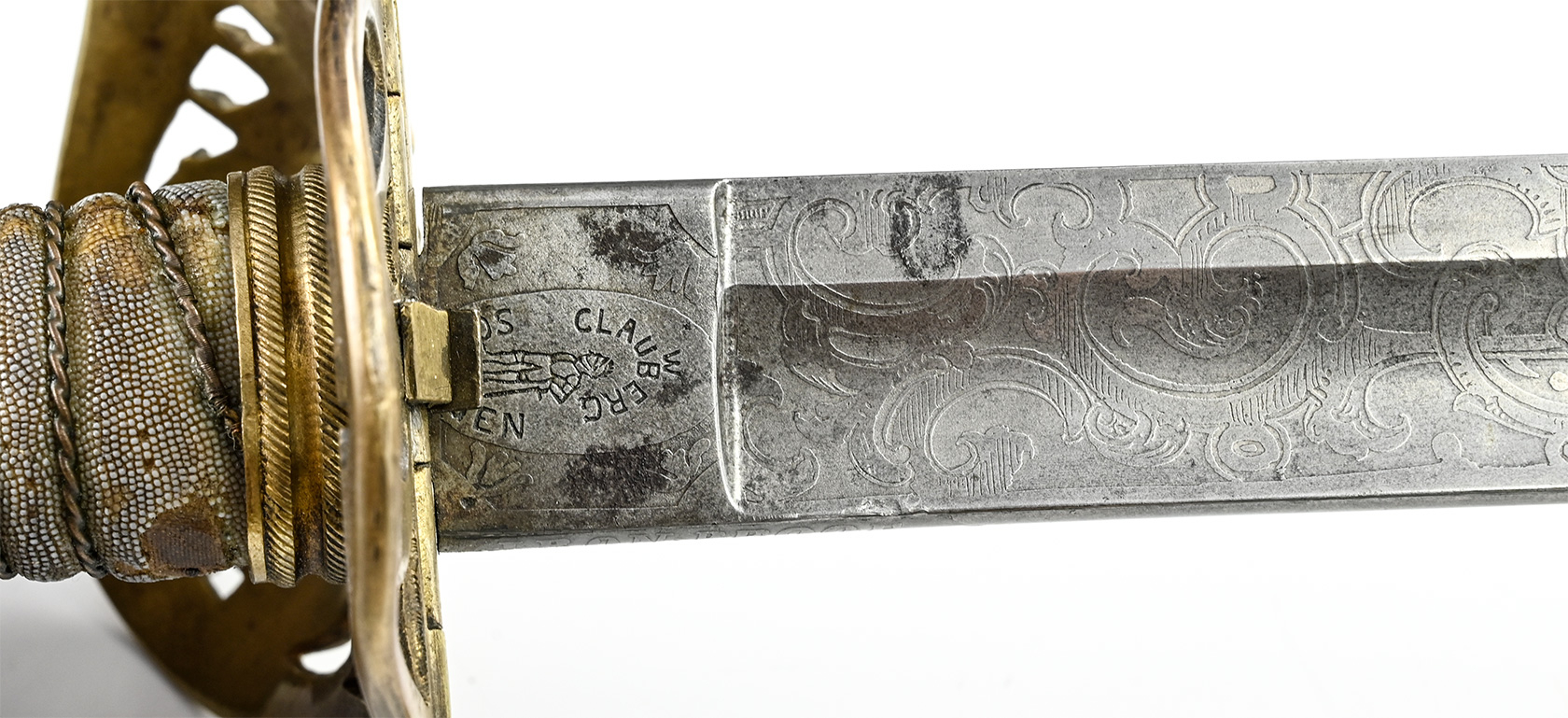
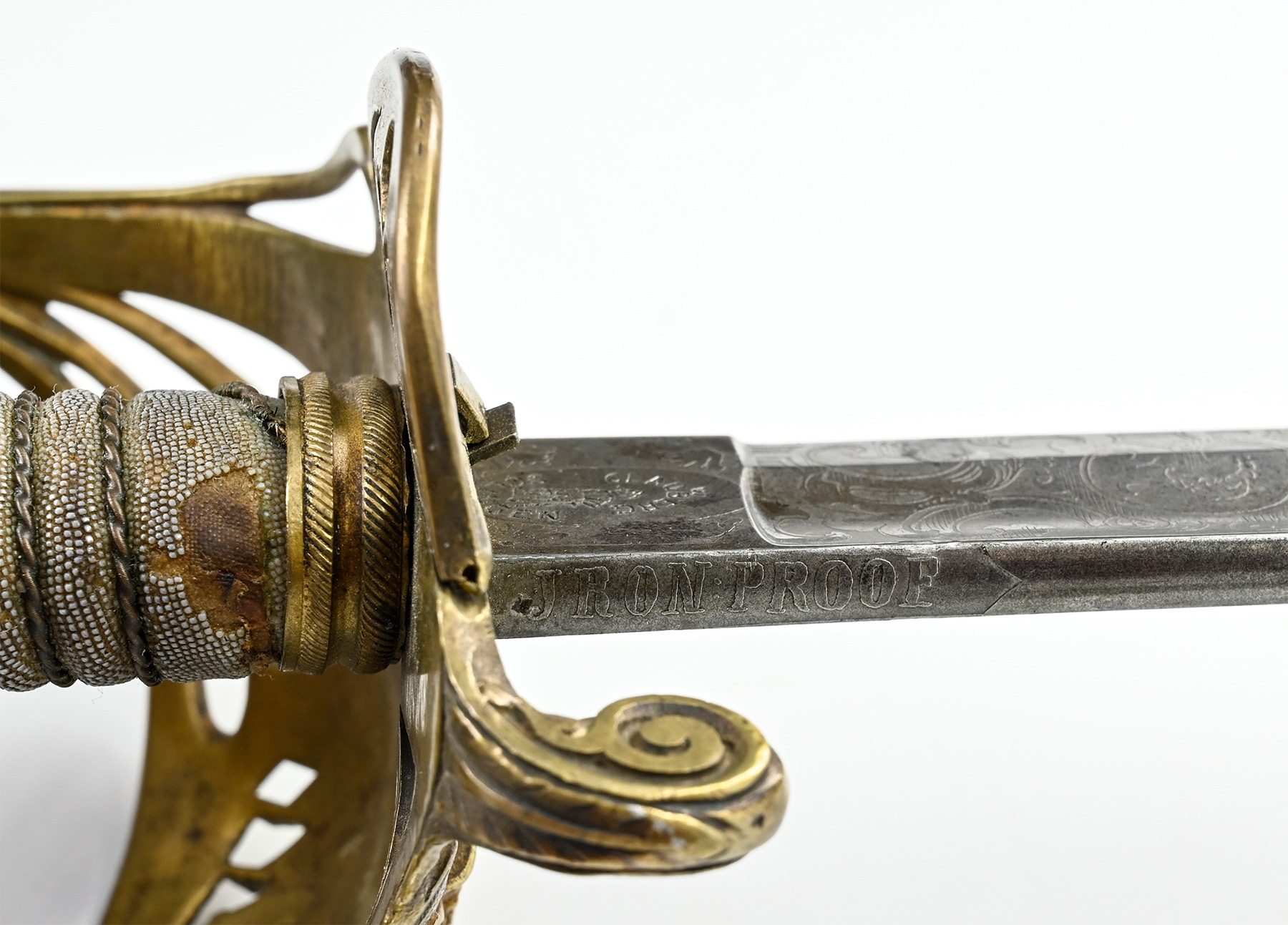
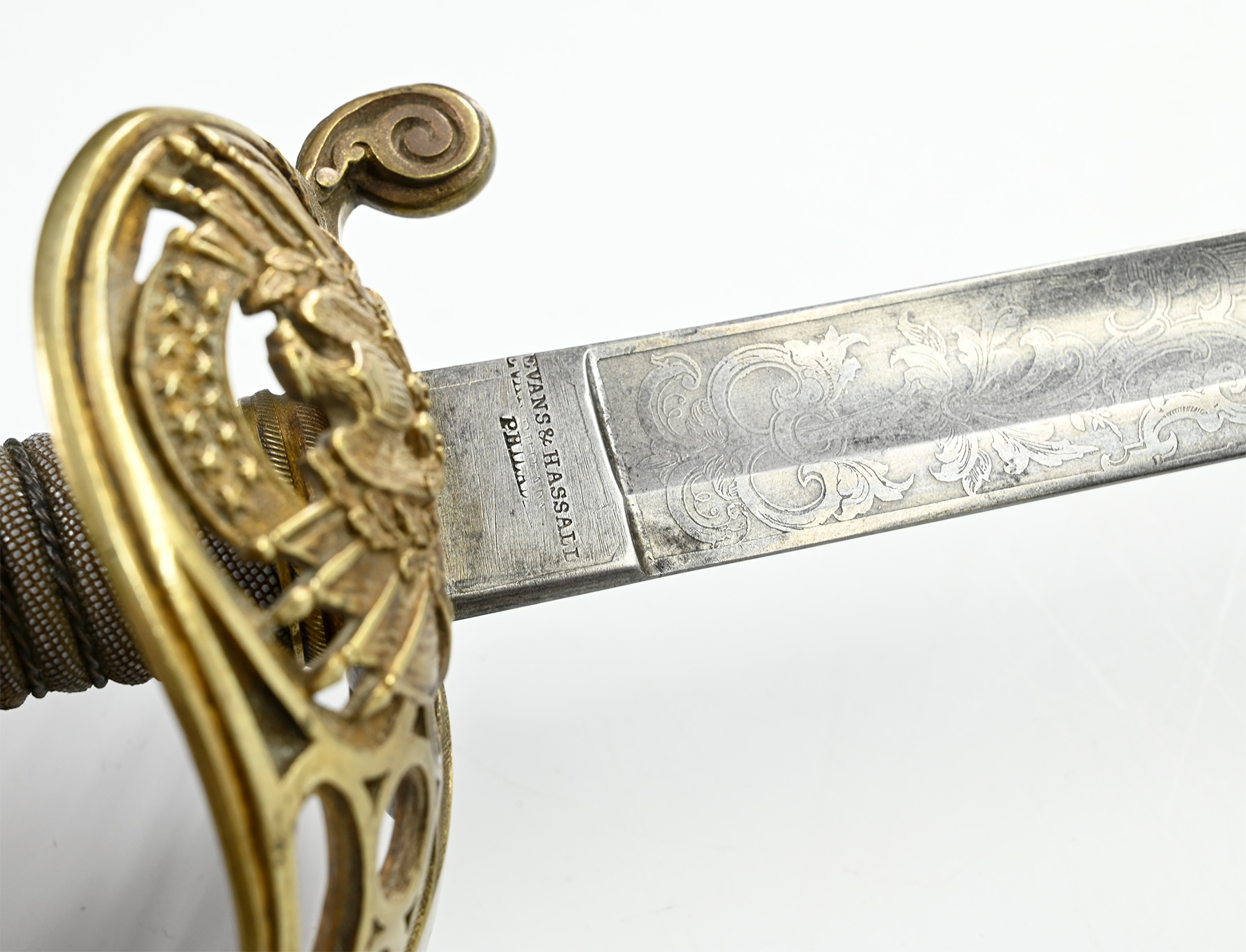
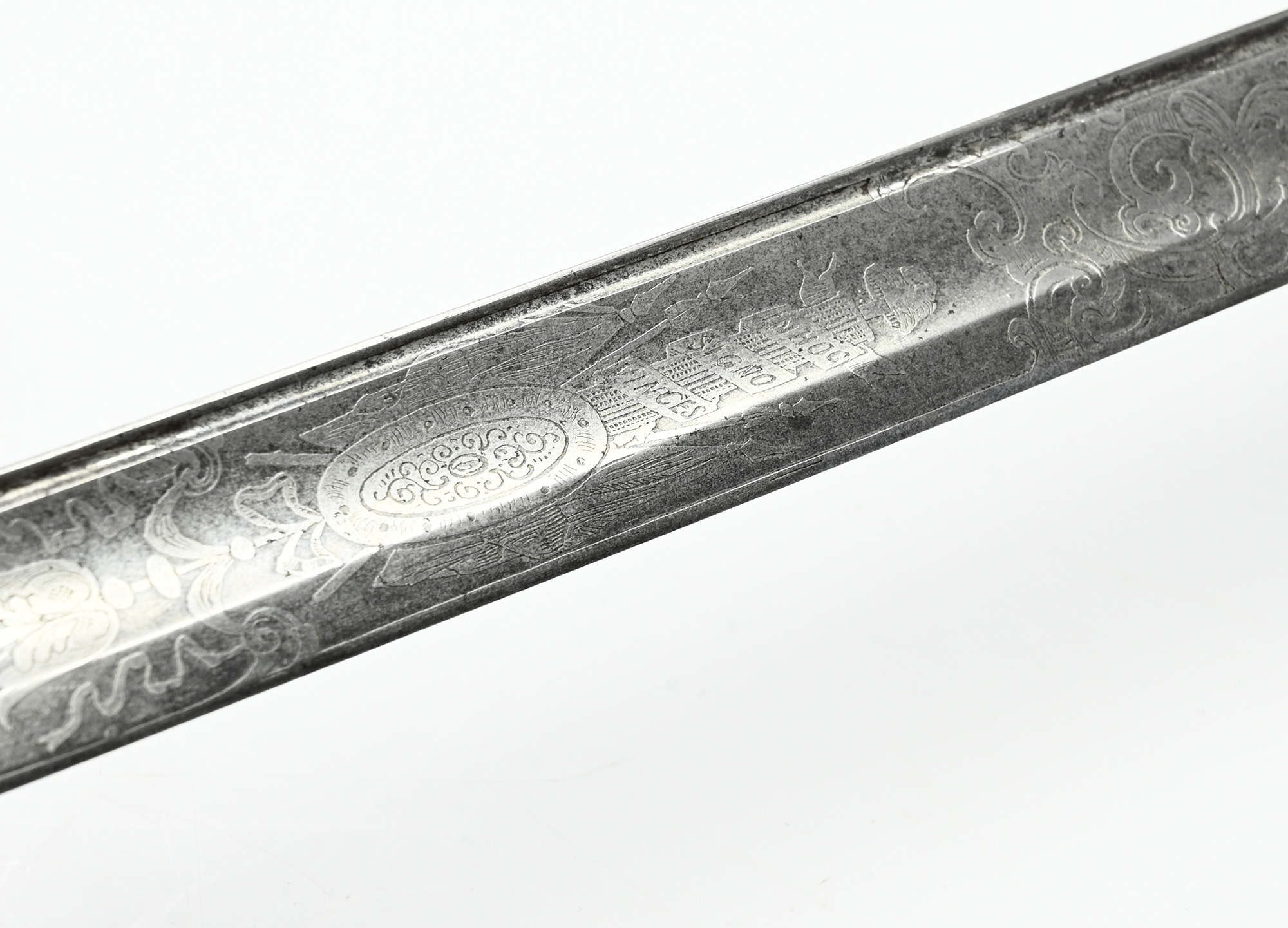
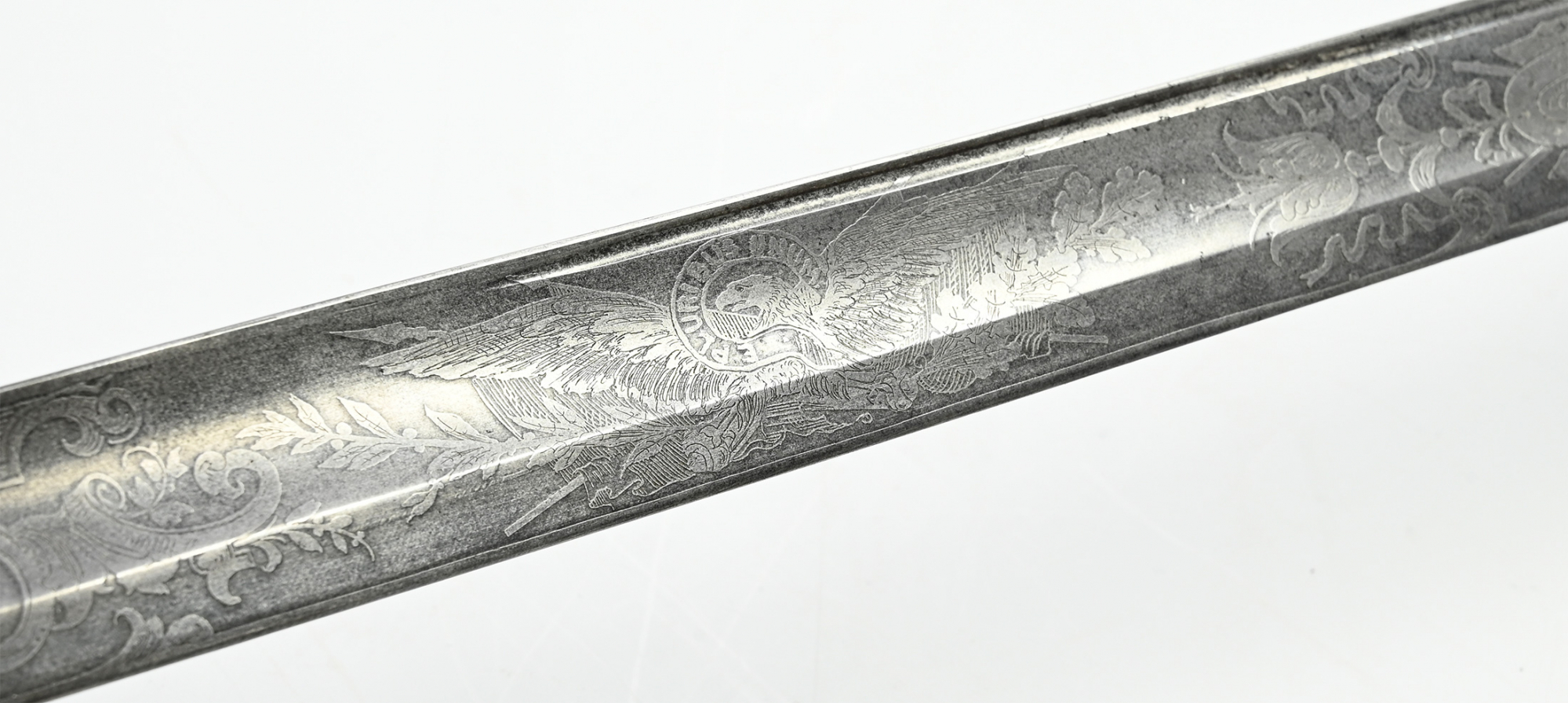
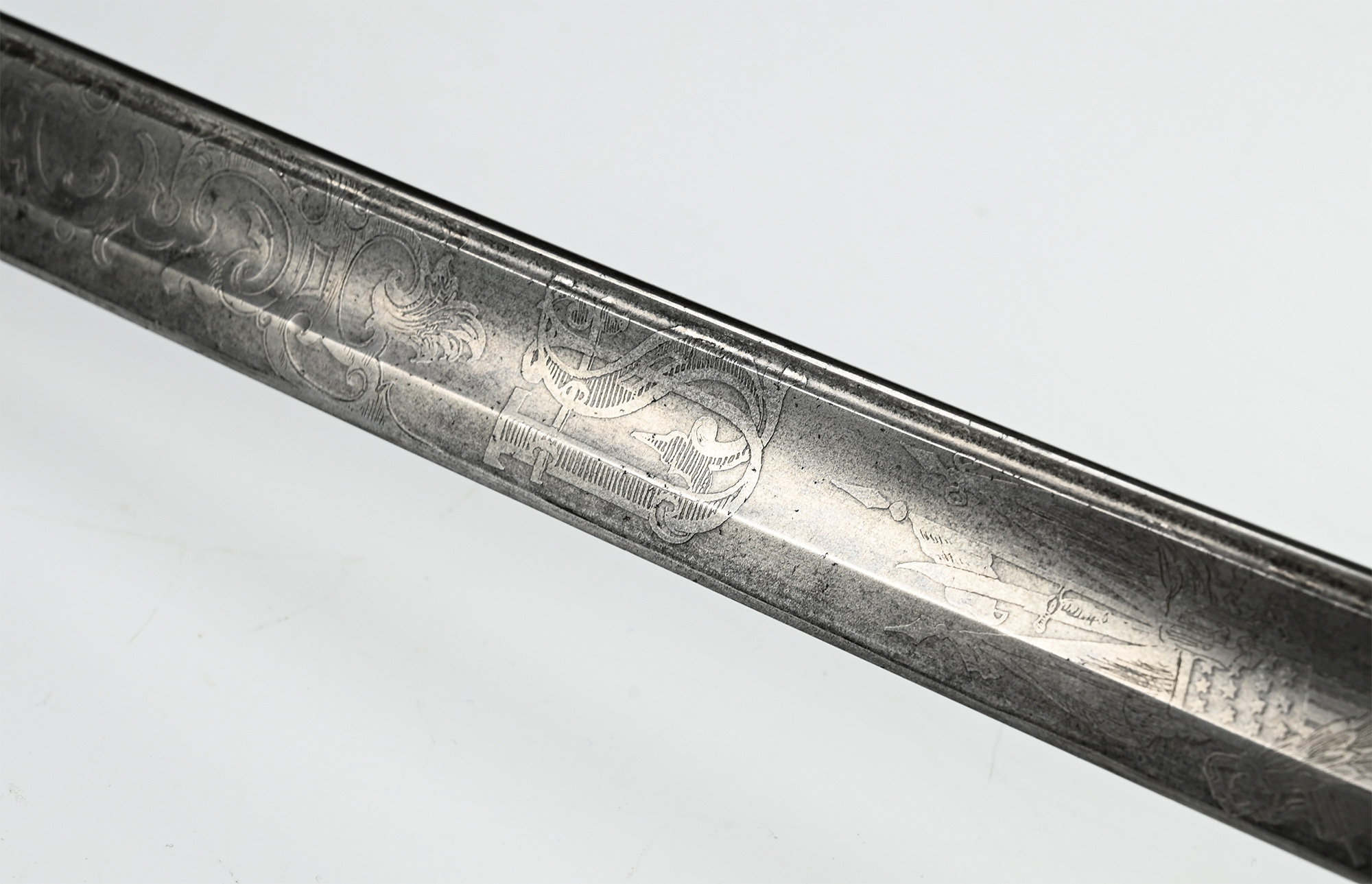
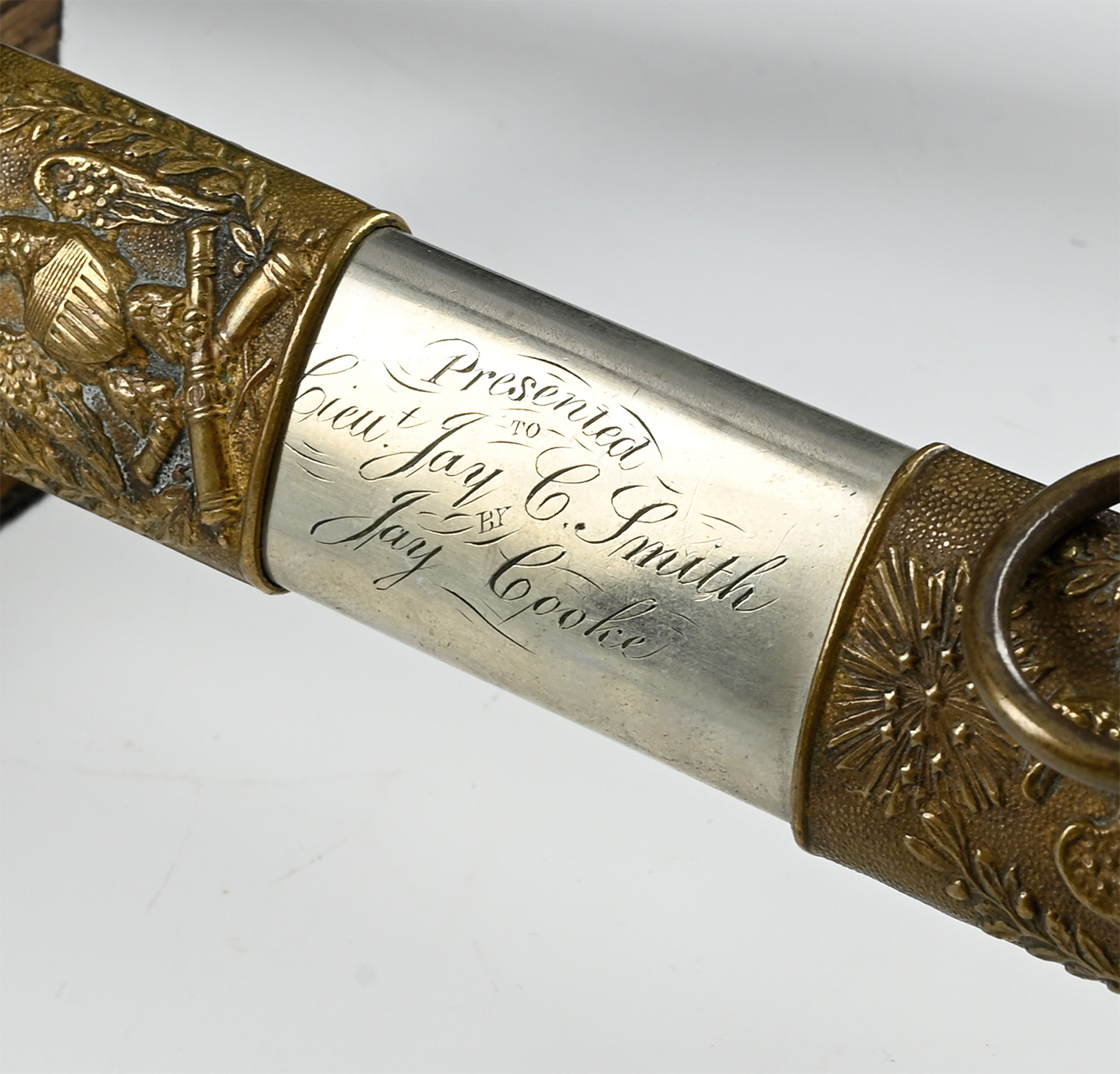
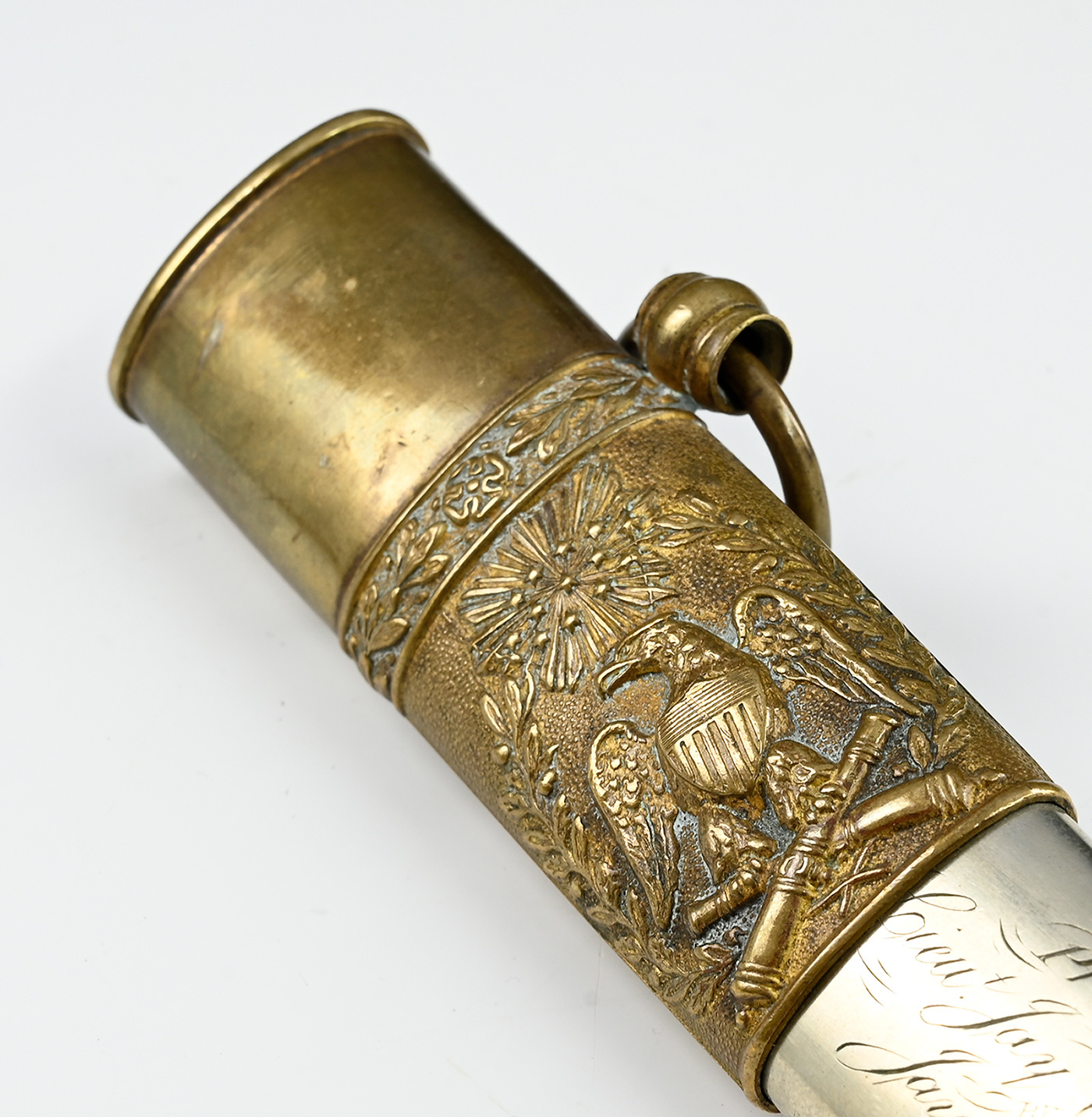
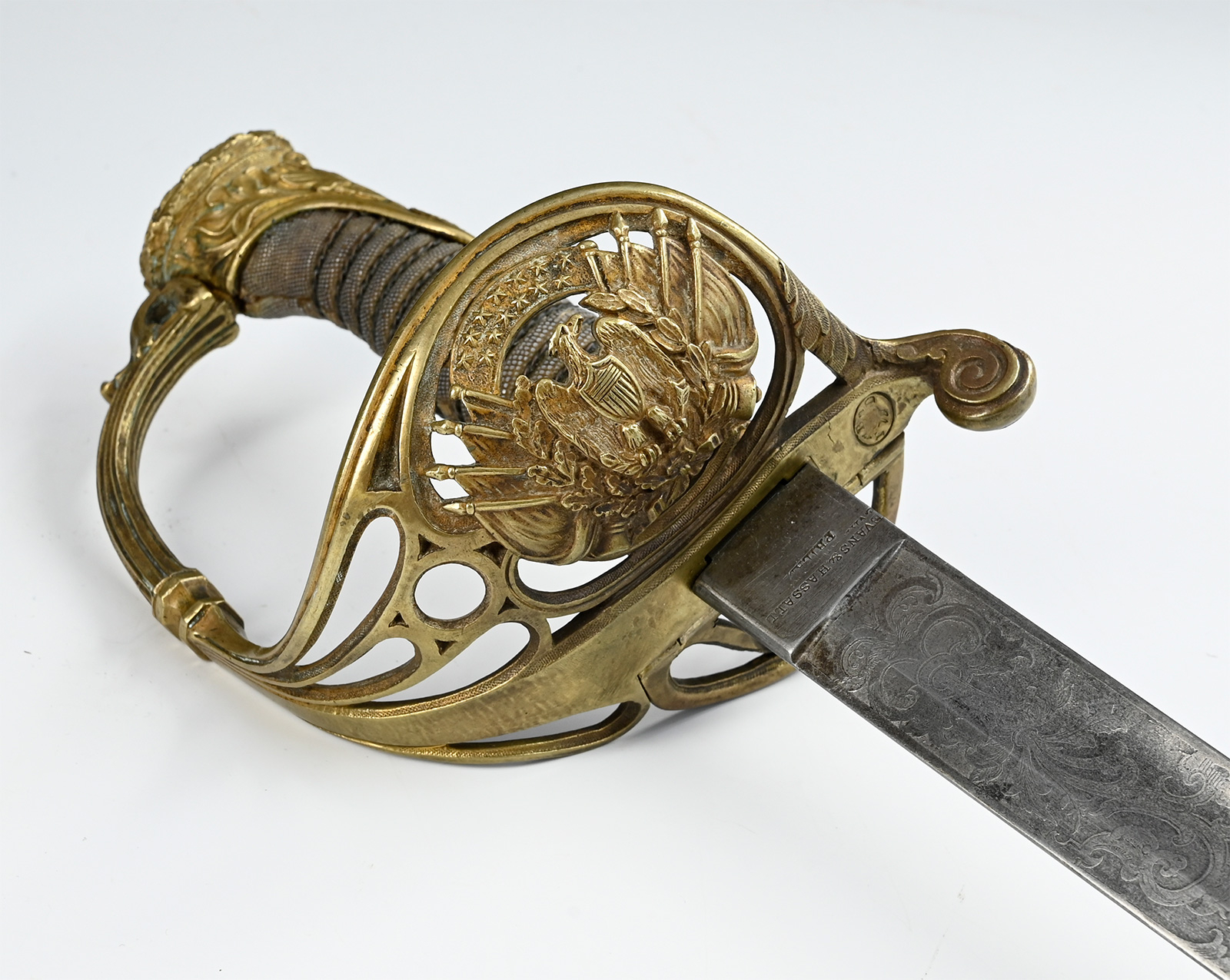
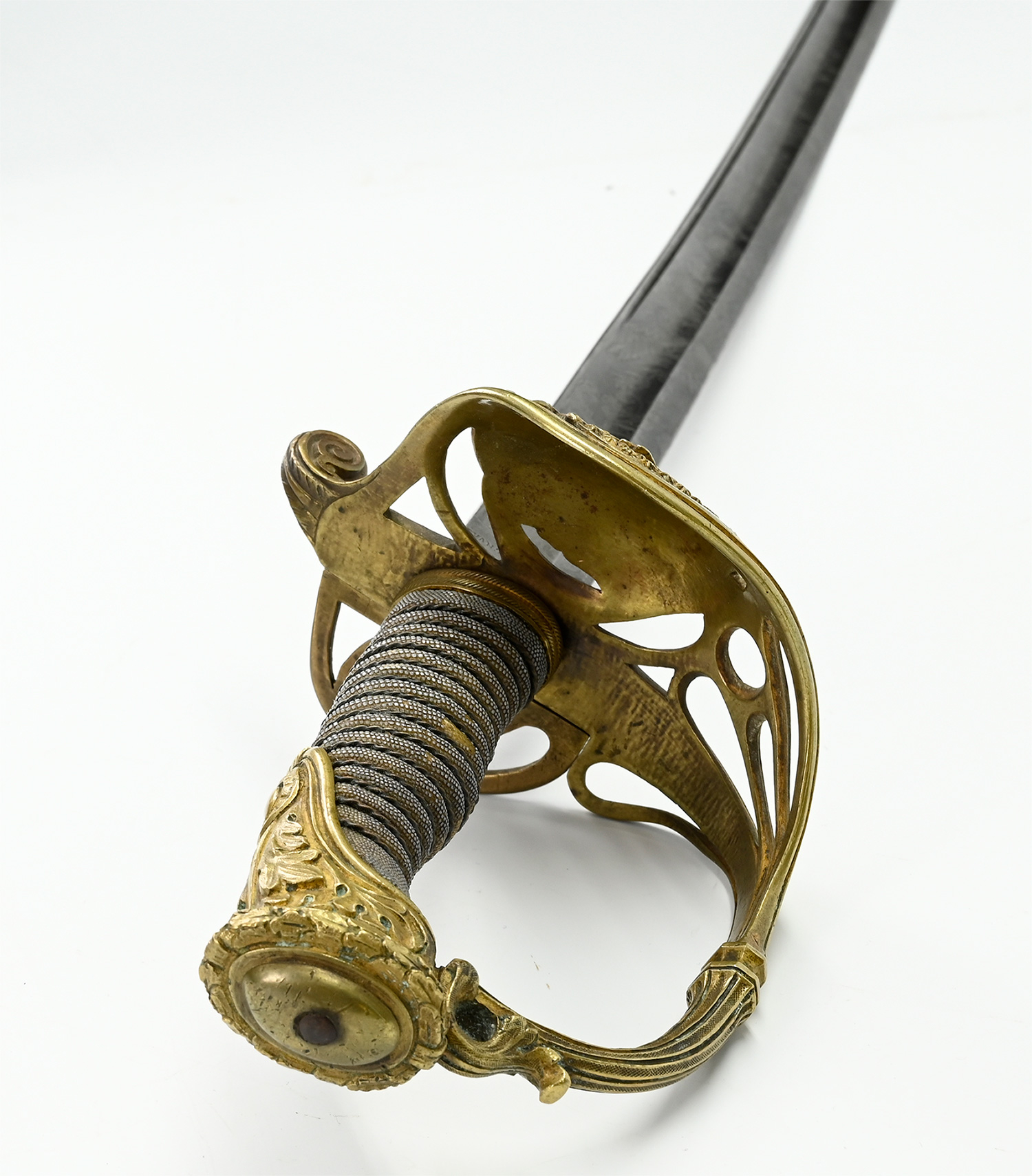
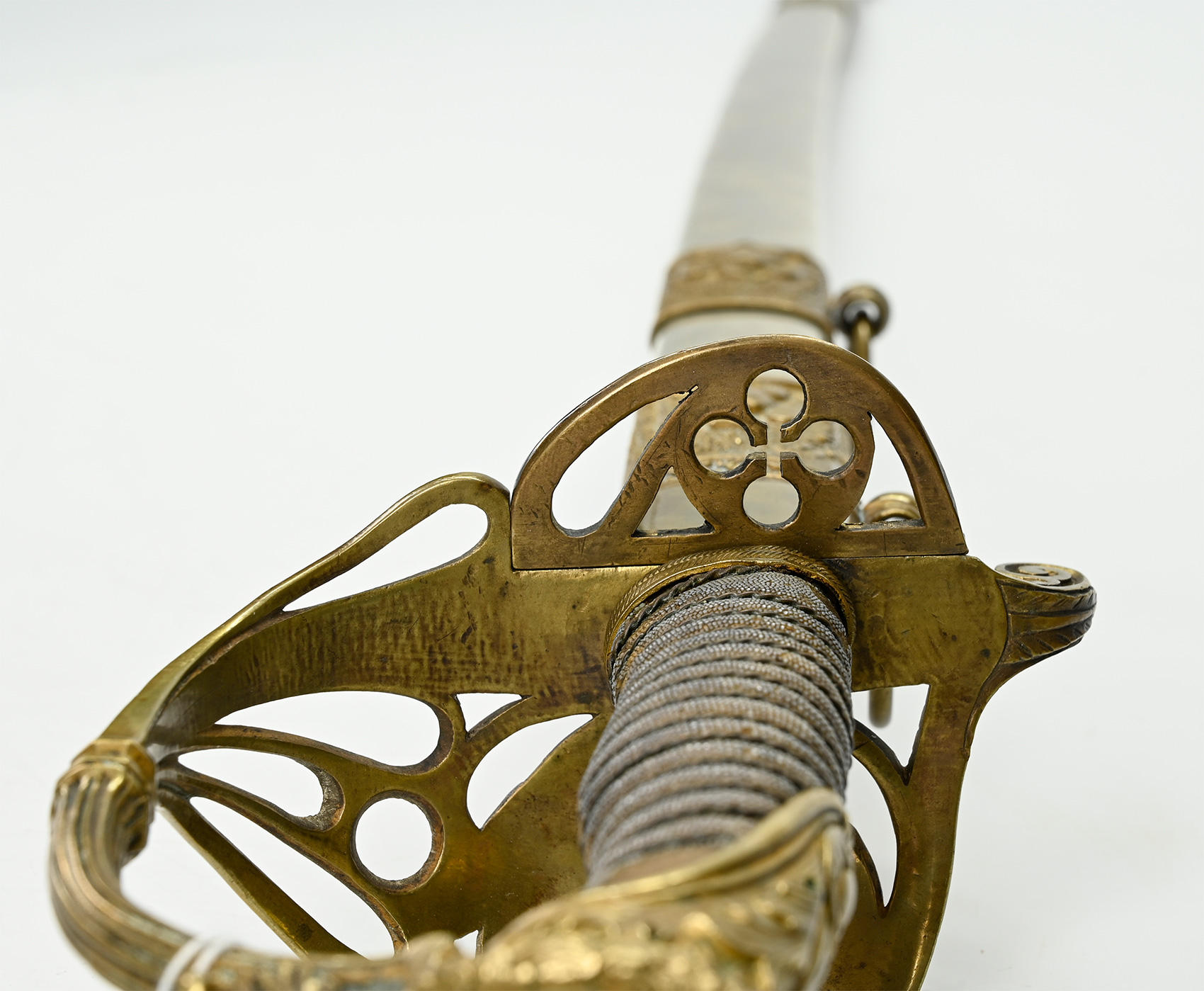
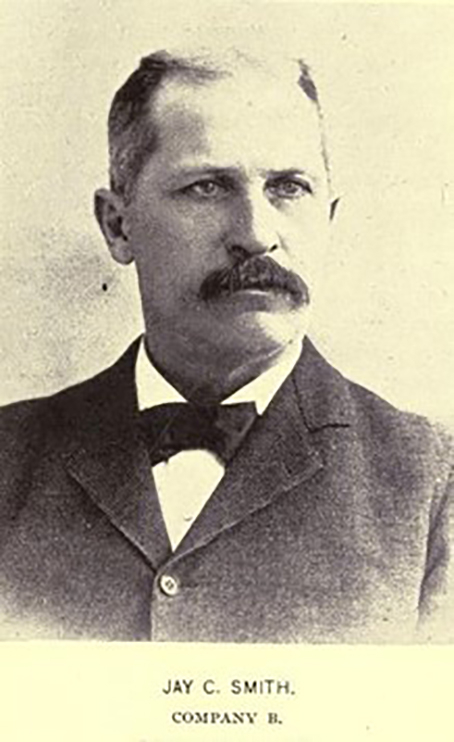
$5,625.00
Originally $7,500.00
Quantity Available: 1
Item Code: 870-650
Shipping: Determined by Method & Location of buyer
To Order:
Call 717-334-0347,
Fax 717-334-5016, or E-mail
This elegant and very high quality, non-regulation presentation staff and field officer’s sword was formerly in the renowned collection of Kevin Hoffman and is pictured both his book, “Swords of Honor and Regulation,” and on page 421 of John Thillmann’s essential “Civil War Army Swords.” The sword was retailed by the well-known Philadelphia military goods dealers Evans and Hassell, and has a very pretty presentation inscription from financier Jay Cooke to fellow Sandusky native Jay Cooke Smith as lieutenant, likely dating to 1864, when he was promoted from sergeant-major and spent a year on brigade staff in the 4th Corps as aide-de-camp.
The similarity of names was likely a gesture on the part of Jay C. Smith’s father, George Washington Smith, to Eleutheros Cooke (father of Jay Cooke,) a prominent lawyer and politician in Sandusky, serving in the state legislature for several terms and one term in the U.S. Congress, and a business man with an early railroad charter. The families certainly knew one another. George Washington Smith (1818-1867,) had moved to Sandusky about 1840 and was a businessman and civic official who held a number of civic and political posts, including County Auditor, City Marshal, County Sheriff, and Sandusky Mayor. Jay Cooke (1821-1905) had moved to Philadelphia by the time of Jay Cooke Smith’s birth in 1844, but maintained personal and family connections with Sandusky, where his father died in 1864, even building his vacation home, rather something of a castle, on Gibraltar Island just to the north, in Lake Erie.
Thillmann classifies the sword as having a hilt combining the French Sabre de officer Chasseurs M1838 and the Sabre d’officer de Marine M1853 (the non-regulation M1847.) The sword has a Clauberg made and marked blade with “iron proof” etched along is back edge. Kevin Hoffman pictured it in his Swords of Honor and Regulation, noting its half basket guard with prominent American eagle with US shield on its chest, flanked by a wreath and with a banner of thirteen stars overhead, superimposed on a panoply of flags with the barrels of cannon just visible at bottom. There is a folding counter guard and four branches connecting to the knucklebow which is chased all the way to the pommel with flutes and scrollwork. The pommel is cast and chased in high relief with a wreath around the rim and a long tail with raised floral motifs. The grip is sharkskin with twisted copper wire.
The blade is a bright, muted silver with some thin gray spots, but very distinct etching throughout. The obverse ricasso is stamped “Evans & Hassall / Philada” and finely etched with foliate scroll work, a spread-winged American eagle, and a stand of ancient arms with the Latin Motto IN HOC/SIGNO/VINCES. The reverse ricasso is stamped “W. / Clauberg / [standing knight] / Solingen.” That side is also finely etched with geometric and floral motifs, a stand of arms with a U.S. shield, a large intertwined US and floral scrolls.
The scabbard is German Silver with high relief cast brass mounts. The top and middle mounts have an American Eagle on crossed cannon, a wreath on the sides and a glory with sunburst and stars above. On the upper mount the ring band has raised floral motifs and the mount continues plain above that to form the throat. The center mount uses a soldered on ring attachment. The boot drag has a floral band at top and overlapping leaf and flower design on the lower half. The presentation is script engraved between the mounts reading: Presented to / Lieut. Jay C. Smith / by / Jay Cooke.
Smith had graduated high school at age 18 in 1862 and joined Co. B of the 101st Ohio on 5 August 1862, mustering in as a private on August 30. He must have been quite capable: he made sergeant-major 4 January 1863 (a regimental history says 2/14/63.) He was promoted 1st Lieutenant 19 March 1864 and apparently posted at that point to brigade staff as aide-de-camp to General Cruft. A biography says he held the post for about a year. Cruft was invalided in early June 1864 and Smith seems to have continued on that post under Cruft’s successor, Col. Isaac Kirby of the 101st during the remainder of the Atlanta Campaign and the Franklin-Nashville Campaign. Kirby thanks Smith and his other staff in his official report for their role at the Battle of Nashville, where they, “rendered great aid in the assault on the enemy’s works by being mounted and continually on the front line.” The regimental history mentions Smith’s assignment to Company I in December 1864, perhaps marking his return to the regiment at the end of the campaign and indicating his commission in early 1864 was specifically to take the ADC position. He mustered out with the regiment 12 June 1865 at Camp Harker, TN. The regiment lost 9 officers and 86 enlisted men killed or mortally wounded at battles such as Stones River, Chickamauga, Resaca, Rocky Face Ridge, Kennesaw, Atlanta, Jonesboro, Franklin, and Nashville. We have not pulled his service records, but Smith’s promotion to sergeant-major in early 1863 likely indicates a good performance at Stones River; he would have held that position rank during Chickamauga; and, his post as a brigade ADC would have put him in a prominent spot in the Atlanta campaign also. Kirby’s praise for Nashville speaks for itself.
Smith returned to Sandusky after the war and took up accounting, but moved to Boston in 1867, working for John Marston Company, a wholesaler in the fish business, as a book-keeper, marrying about 1874 and raising three sons. He set up his own business about 1882 and was mentioned as a “prominent Boston businessman in a 1910 newspaper note. He was active in the G.A.R. and U.A.V. in Chelsea, Mass., and died in Billerica, Mass, in 1928, at age 84. Jay Cooke went on to lose his fortune, and make another.
This is a great sword with an interesting history, presented by one of the major figures of the wear, and with much research yet to be done. [sr] [ph:m]
~~~~~~~~~~~~~~~~~~~~~~~~~~~~~~~~~~~
THIS ITEM, AS WITH ALL OTHER ITEMS AVAILABLE ON OUR WEB SITE,
MAY BE PURCHASED THROUGH OUR LAYAWAY PROGRAM.
CLICK HERE FOR OUR POLICIES AND TERMS.
THANK YOU!
Inquire About PRESENTATION SWORD FROM JAY COOKE, FINANCIER OF THE UNION, TO FELLOW SANDUSKY OHIO NATIVE LT. JAY COOKE SMITH, 101st OHIO, ADC TO GEN. CRUFT AND BRIGADE COMMANDER KIRBY, 4th ARMY CORPS: “…MOUNTED AND CONTINUALLY ON THE FRONT LINE” AT NASHVILLE.
Most Popular
Historical Firearms Stolen From The National Civil War Museum In Harrisburg, Pa »
Theft From Gravesite Of Gen. John Reynolds »
Selection Of Unframed Prints By Don Troiani »
Fine Condition Brass Infantry Bugle Insignia »
Large English Bowie Knife With Sheath 1870’S – 1880’S »
Imported (Clauberg) Us Model 1860 Light Cavalry Officer's Saber »
featured item
VIRGINIA OFFICER’S BELT PLATE REMOVED FROM THE BODY OF COL. JAMES G. HODGES, 14th VIRGINIA, KILLED IN PICKETT’S CHARGE, WITH HIS COLONEL’S STARS- THE PLATE RETURNED TO HIS WIDOW IN 1903!
This historic group includes the Virginia Confederate officer’s sword belt plate removed from the body of Colonel James Gregory Hodges, 14th Virginia, Armistead’s brigade, killed at the stone wall near the 69th Pennsylvania monument and High… (846-563). Learn More »


